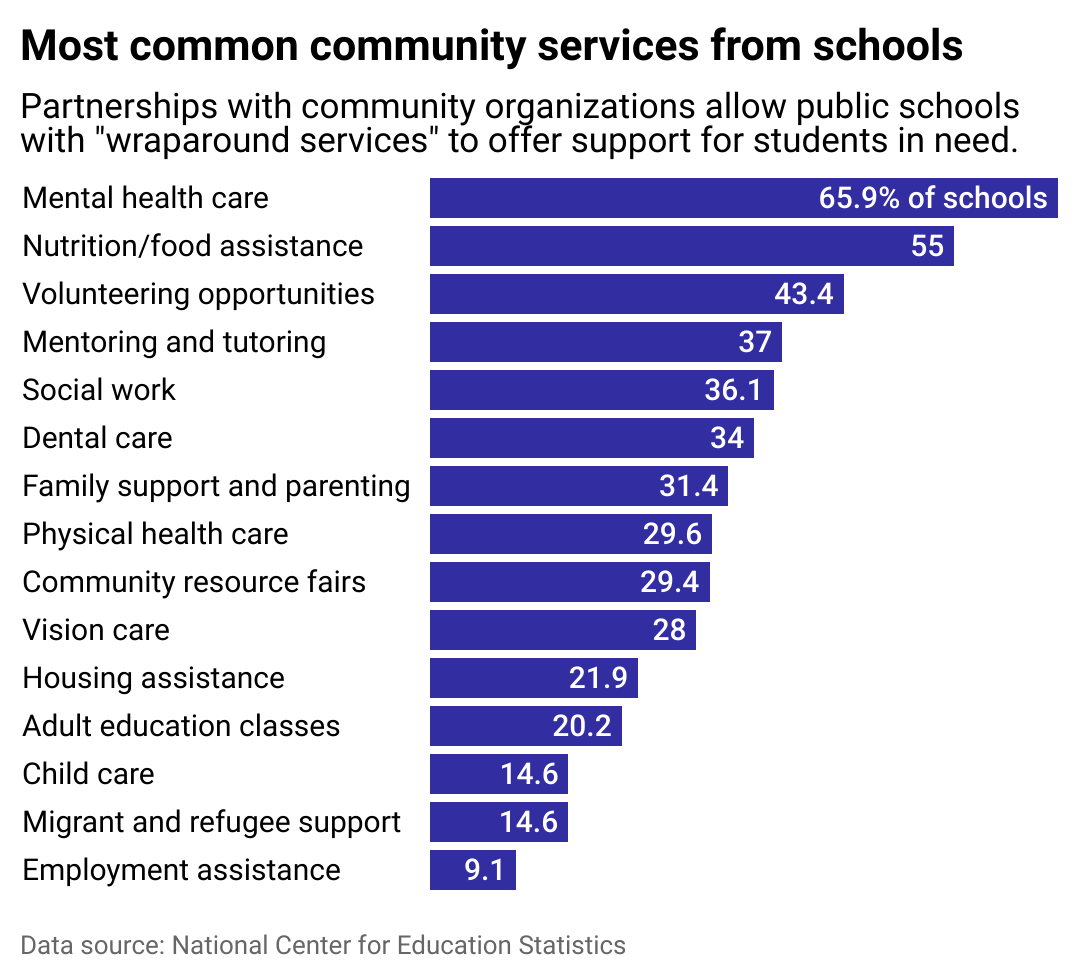Community schools work to boost student performance by meeting their non-academic needs

Canva
Community schools work to boost student performance by meeting their non-academic needs
Children at the buffet in a canteen choosing their lunch.
Schools don’t operate in a silo—events in students’ lives before and after school can have a big effect on how well they perform in school. To help address issues facing students related to the persistent effects of the COVID-19 pandemic, economic inequalities, and achievement gaps, an increasing number of educational facilities are turning to a framework that provides families with responsive support and services.
The “community school model” offers students and families wraparound services in support of nutrition, mental health, housing, and other nonacademic needs of the neighborhood through partnerships with community-based organizations like the Y and Boys & Girls Clubs of America.
For the 2023-24 school year, 60% of public schools in the U.S. leveraged the community school model, up from 45% the year prior. Studies show this model is making a difference—a Learning Policy Institute review of 143 research studies found that this strategy can close achievement gaps for disadvantaged students and gives children more opportunities to succeed.
Numerade analyzed National Center for Education Statistics data to measure the growth of community schools and explore the connection between access to social services and academic performance.
Community schools provide services based on student—and family—population needs. This is primarily done through the work of a support specialist who coordinates resources for students and their families. The family support specialist at Cleveland’s Almira Elementary School, for example, maintains a resource closet with donated clothes and hygiene supplies for students, refers families to organizations that can help with bill payment, and acts as a sounding board.
At San Diego Unified School District, community schools offer a myriad of services including in-school food pantries, dental services, counseling, and parenting classes in response to social and learning issues that were worsened by the pandemic. The school district anticipates this school model will boost attendance, grades, and graduation rates for its 121,000 students, 7% of whom are unhoused.
![]()

Numerade
Services available to students are as varied as their needs
Bar chart showing the most common community services from schools. Partnerships with community organizations allow public schools with “wraparound services” to offer support for students in need. Mental health and nutrition/food assistance are most predominant.
One tenet of the community school model is that no two schools are alike because no two communities are alike—and communities and their needs may even change over time, such as Benjamin Franklin High School in South Baltimore, which estimates its immigrant population will increase from 18% in 2015 to 43% in 2024 and will have evolved needs.
Transforming a school into a “one-stop shop” can alleviate issues students may have with access to services and learning opportunities.
A program in Florida partners school districts with universities or colleges, community-based nonprofits, and health care providers to create campuses that offer on-site tutoring, after-school programs, and access to health services. A junior high school in Anaheim, California, created a two-room community center on campus that offers a food pantry and mobile dental services every month.
In Taos, New Mexico, community schools cover basic needs for low-income students—including laundry services and showers; home visits and multilingual services provide additional support, and an after-school gardening program teaches students and their families about nutrition.
According to a 2023 study in the American Educational Research Journal, meeting these social and socioeconomic needs—also called the social determinants of learning—helps families, educators, and school districts put students in a better position to learn. In fact, researchers said, “the source of many differences in students’ learning opportunities will be out-of-school factors, such as systemic racism, housing (in)security, fluency in the language of instruction, air and water quality, and so forth.” Schools designed to address these issues are on the best track to close the opportunity gap and make education accessible to students regardless of their needs.
Additional writing by Kelly Glass. Story editing by Nicole Caldwell. Copy editing by Tim Bruns.
This story originally appeared on Numerade and was produced and
distributed in partnership with Stacker Studio.
